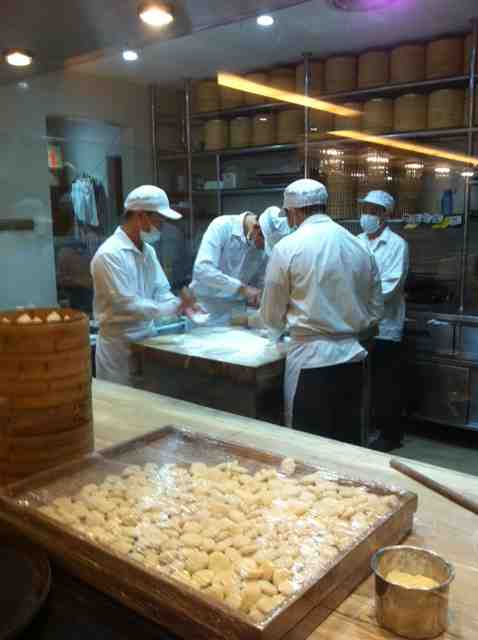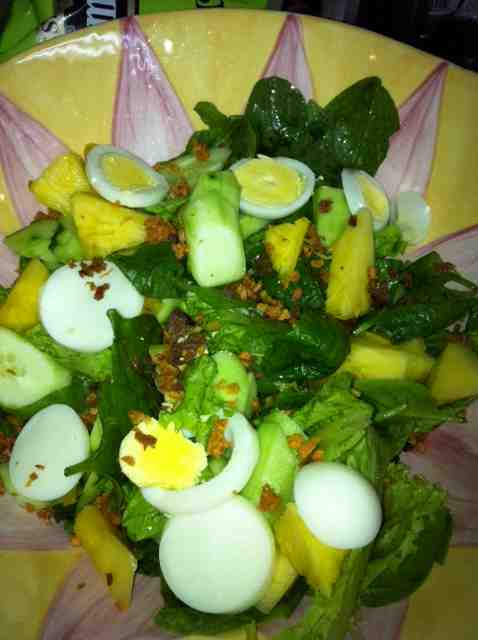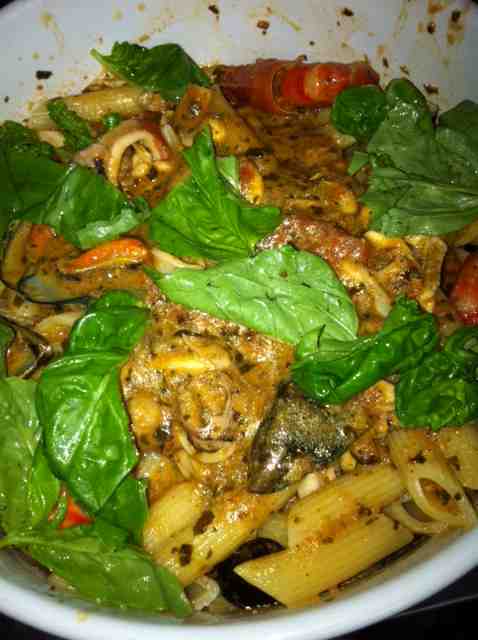If you live in Japan, or in cold countries such as Canada, it's so easy to get ready with all the ingredients because it's not a problem so much to put something raw inside Sushi.
But here in the Philippines, first thing you worry about is
1. How fresh can you get the ingredients?
2. How long does it take before it starts getting rotten. Ew
You wouldn't want to think about getting upset stomach. or food poisoning someone, unintentionally of course, but still.
So here is my suggestion.
Don't use raw fish or raw meat.

Here's the way I do it in the Philippines.
I use locally produced vinegar such as Amihan or Silver Swan.
Recently I found Marca Piña no chemical added vinegar, so I used that this time.
May be it's better if you use rice vinegar from Japan, but I go for cheaper, to me it doesn't taste much different.
Every 3 cups of vinegar, add 2 cups of sugar.
I used a glass to measure the sugar.
I don't buy white sugar, so this is washed sugar.
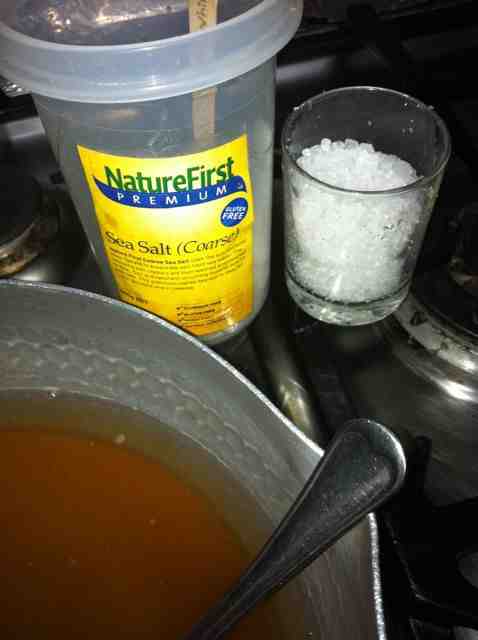
Now add salt.
I used rock salt this time, but refined salt can do.
Around 1/2 to 2/3 glass of salt. according to your taste.
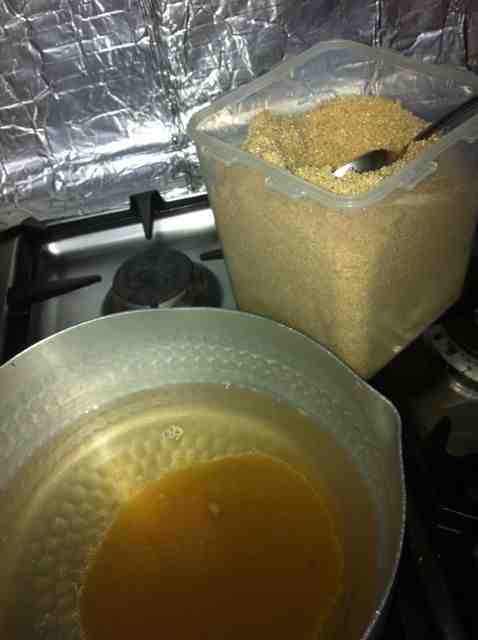
Heat the pot, but not so much, just to melt the sugar and salt.
By the way, you have to be cooking rice while making this sushi vinegar.
But this sushi vinegar can stand at room temperature even here in the Philippines, so I normally make a lot so I can make sushi anytime when my kids ask me to make one.
When you cook rice, don't forget to reduce water a little bit. May be around 1 table spoon per cup of rice.
You have to make space for the vinegar you'll add later on, otherwise the rice will be very wet and not suitable for sushi.
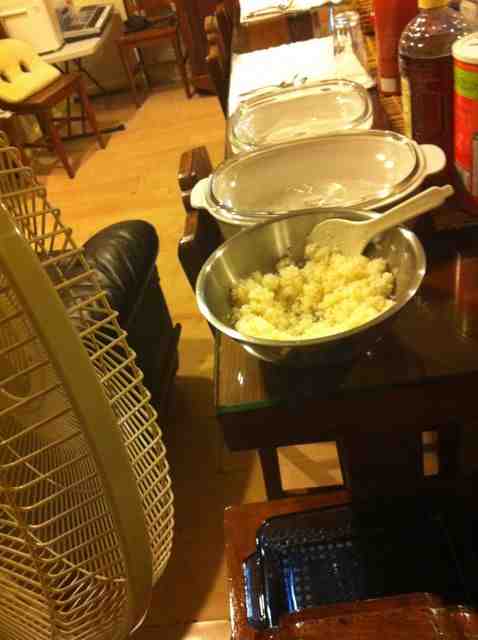
The amount of sushi vinegar you put in rice is according to your taste.
Just add slowly to avoid putting too much.
And please don't mix the rice like what you do in cooking. Move the spoon or rubber spatula like you are cutting something, not to the side way, but straight towards yourself.
Once the sushi vinegar is mixed well, and the taste is suitable to you, put the bowl in front of electric fan, so excess water will evaporate easily.
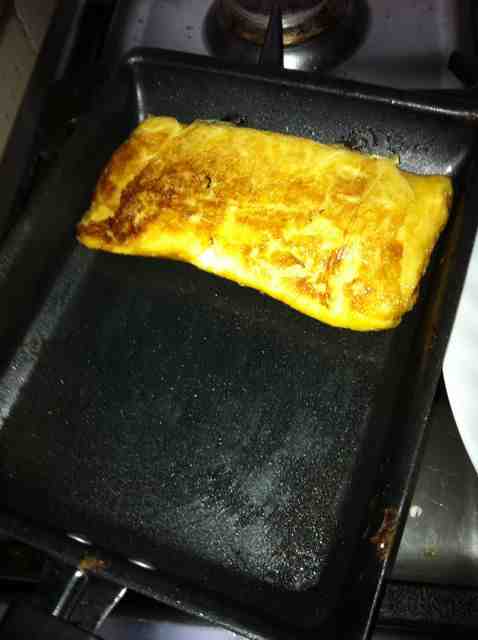
While cooling the rice, cook Japanese sweeten egg.
It doesn't have to be cooked in square pan if you don't have, but make sure you pour the egg little by little and keep rolling to make a thick egg omelet.
I add one Table spoon of sugar to each Large egg, and sprinkle of salt.
I used 4 eggs here.
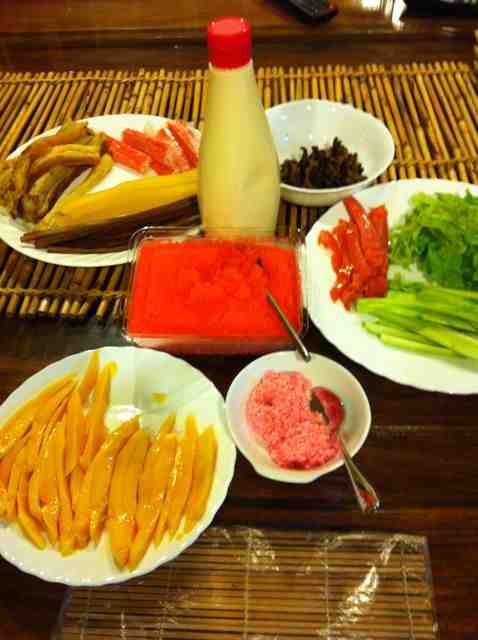
So here are things I used.
Tobiko or Ebiko is the orange thing in the middle, which is the eggs of shrimp or something. It is raw, but salty, and I think it has a little preservative, cause I never saw this get spoiled even I left it in room temperature one whole day. (And the room temperature here is above 30℃)
Lettuce cut in stripe
Cucumber cut in stripe too
Smoke salmon from Canada (my sister in law gave me)
sweeten egg omelet
Japanese or Korean yellow radish pickles (optional)
Gobo pickles (optional) * I found this in Korean grocery
Crab sticks
Ripe mango cut in stripe
Pink Denbu (fish flakes with sugar)
Dried Shitake mushroom cooked in dashi soy sauce with sugar (optional)
(There are so many cheap dried Shitake mushroom available in the Philippines, so I cook at lot of this and keep in freezer. And anytime you want to make Sushi roll, I defrost a little in room temperature and put in sushi.)
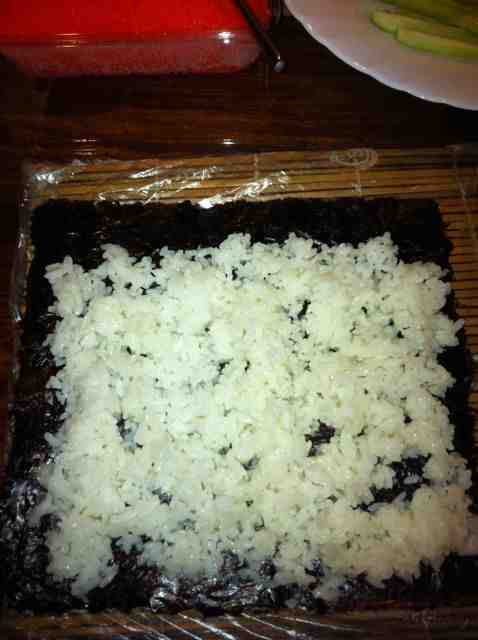
I used Nori wrapper from Korean grocery.
It was only 280pesos for 100 pieces. (490yen only)
Put the rice evenly, but do not push.
Leave a lilttle space at the end.
Also it helps if you wrap your bamboo sushi roll mat by plastic, or put it inside plastic bag and tape it.
Rice won't stick that easily if plastic. (only optional)

I have many things to put in it, so it has to be two-storied.

Putting on top of another..

Tack in first all the filling before you roll until the end.
Use the edge of bamboo sushi mat to tack it in.

When you cut the roll, wet the knife with sushi vinegar.
As soon as the knife gets sticky with rice, wet it again with sushi vinegar.
But normally the both ends are too soft that you can't include them on plates.
Good luck!
Comment me if you have any question.
But here in the Philippines, first thing you worry about is
1. How fresh can you get the ingredients?
2. How long does it take before it starts getting rotten. Ew
You wouldn't want to think about getting upset stomach. or food poisoning someone, unintentionally of course, but still.
So here is my suggestion.
Don't use raw fish or raw meat.

Here's the way I do it in the Philippines.
I use locally produced vinegar such as Amihan or Silver Swan.
Recently I found Marca Piña no chemical added vinegar, so I used that this time.
May be it's better if you use rice vinegar from Japan, but I go for cheaper, to me it doesn't taste much different.
Every 3 cups of vinegar, add 2 cups of sugar.
I used a glass to measure the sugar.
I don't buy white sugar, so this is washed sugar.

Now add salt.
I used rock salt this time, but refined salt can do.
Around 1/2 to 2/3 glass of salt. according to your taste.

Heat the pot, but not so much, just to melt the sugar and salt.
By the way, you have to be cooking rice while making this sushi vinegar.
But this sushi vinegar can stand at room temperature even here in the Philippines, so I normally make a lot so I can make sushi anytime when my kids ask me to make one.
When you cook rice, don't forget to reduce water a little bit. May be around 1 table spoon per cup of rice.
You have to make space for the vinegar you'll add later on, otherwise the rice will be very wet and not suitable for sushi.

The amount of sushi vinegar you put in rice is according to your taste.
Just add slowly to avoid putting too much.
And please don't mix the rice like what you do in cooking. Move the spoon or rubber spatula like you are cutting something, not to the side way, but straight towards yourself.
Once the sushi vinegar is mixed well, and the taste is suitable to you, put the bowl in front of electric fan, so excess water will evaporate easily.

While cooling the rice, cook Japanese sweeten egg.
It doesn't have to be cooked in square pan if you don't have, but make sure you pour the egg little by little and keep rolling to make a thick egg omelet.
I add one Table spoon of sugar to each Large egg, and sprinkle of salt.
I used 4 eggs here.

So here are things I used.
Tobiko or Ebiko is the orange thing in the middle, which is the eggs of shrimp or something. It is raw, but salty, and I think it has a little preservative, cause I never saw this get spoiled even I left it in room temperature one whole day. (And the room temperature here is above 30℃)
Lettuce cut in stripe
Cucumber cut in stripe too
Smoke salmon from Canada (my sister in law gave me)
sweeten egg omelet
Japanese or Korean yellow radish pickles (optional)
Gobo pickles (optional) * I found this in Korean grocery
Crab sticks
Ripe mango cut in stripe
Pink Denbu (fish flakes with sugar)
Dried Shitake mushroom cooked in dashi soy sauce with sugar (optional)
(There are so many cheap dried Shitake mushroom available in the Philippines, so I cook at lot of this and keep in freezer. And anytime you want to make Sushi roll, I defrost a little in room temperature and put in sushi.)

I used Nori wrapper from Korean grocery.
It was only 280pesos for 100 pieces. (490yen only)
Put the rice evenly, but do not push.
Leave a lilttle space at the end.
Also it helps if you wrap your bamboo sushi roll mat by plastic, or put it inside plastic bag and tape it.
Rice won't stick that easily if plastic. (only optional)

I have many things to put in it, so it has to be two-storied.

Putting on top of another..

Tack in first all the filling before you roll until the end.
Use the edge of bamboo sushi mat to tack it in.

When you cut the roll, wet the knife with sushi vinegar.
As soon as the knife gets sticky with rice, wet it again with sushi vinegar.
But normally the both ends are too soft that you can't include them on plates.
Good luck!
Comment me if you have any question.











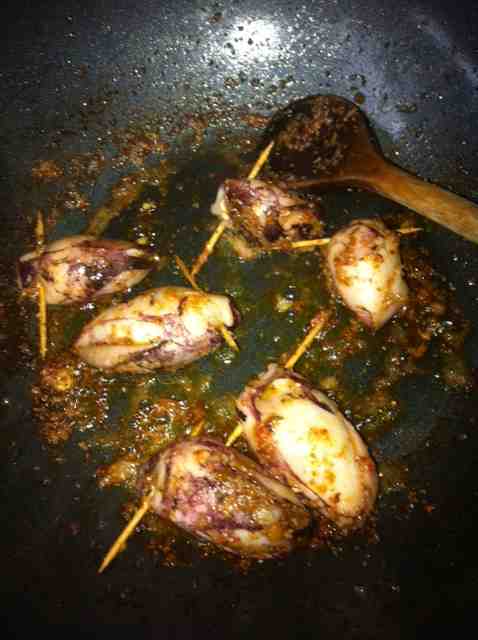
 画像フォルダ
画像フォルダ
